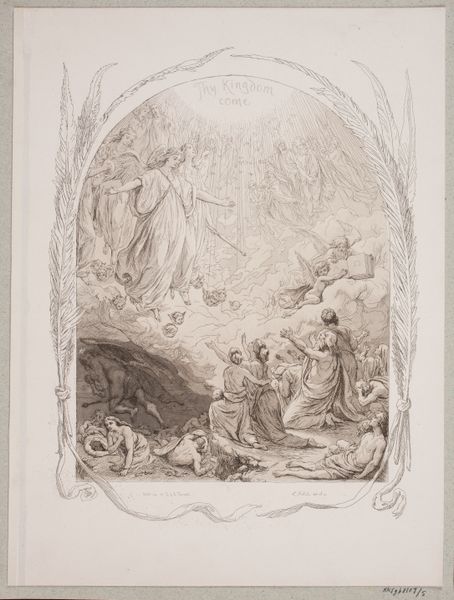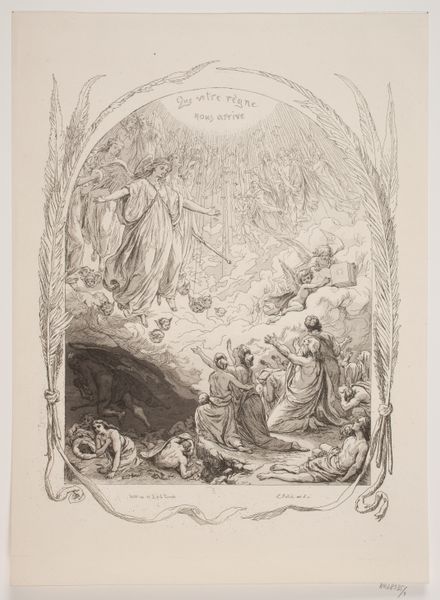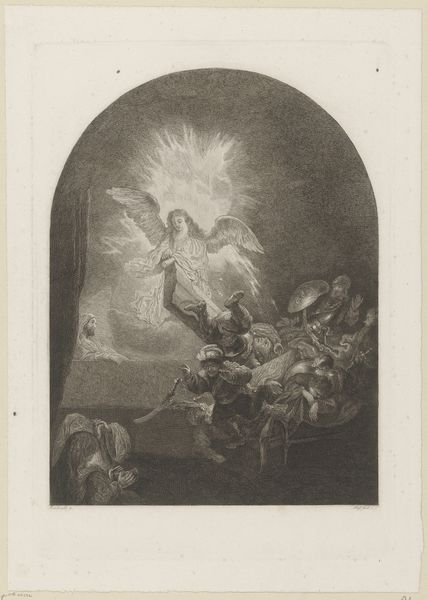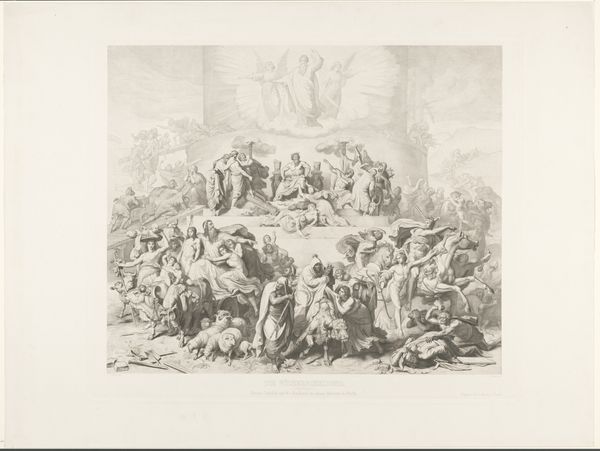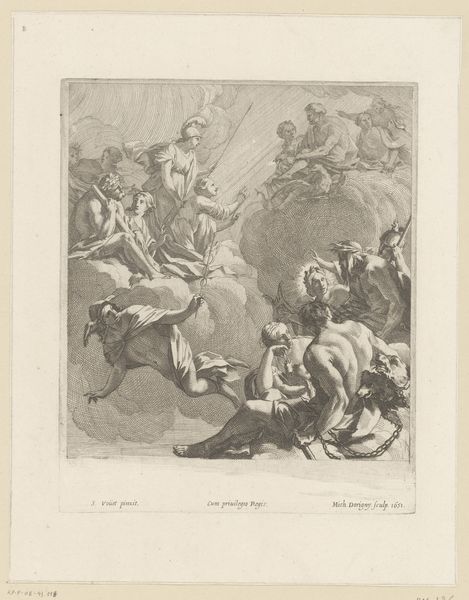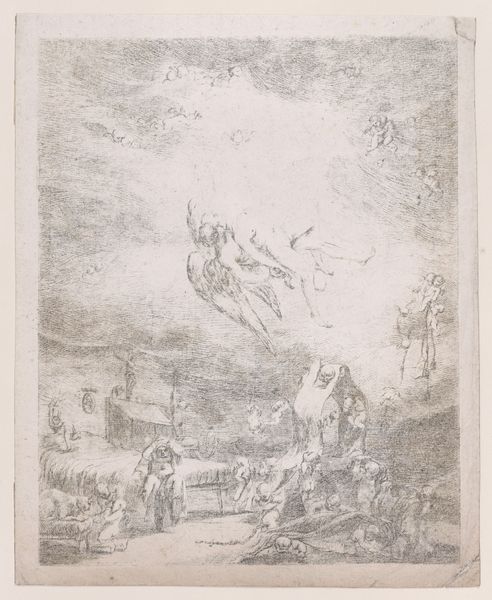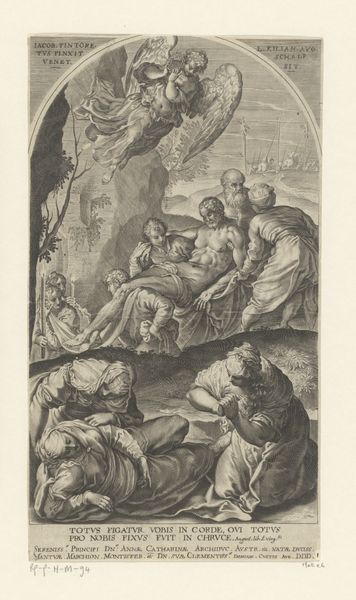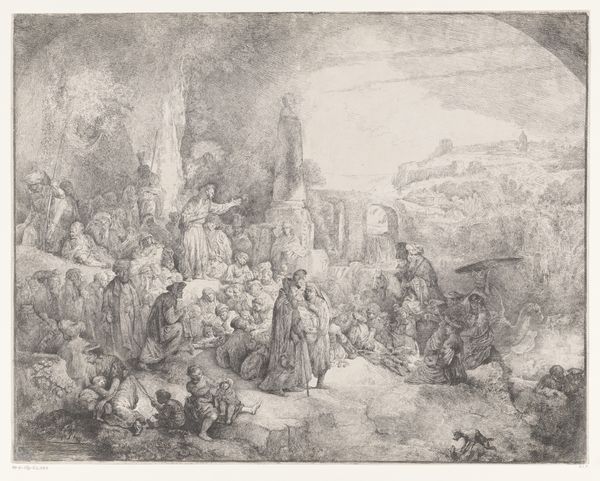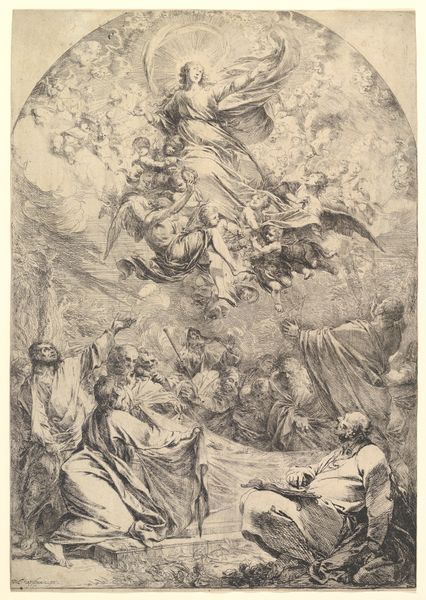
print, engraving
#
narrative-art
# print
#
figuration
#
history-painting
#
engraving
Dimensions: 307 mm (height) x 229 mm (width) (bladmaal)
Editor: So, this is Lorenz Frølich’s "Illustration til 'The Lord's Prayer'," from 1863. It's an engraving, so a print. I'm struck by the stark contrast between the earthly figures and the ethereal realm above. What do you see in this piece beyond a religious scene? Curator: This work invites us to consider the power dynamics embedded within religious narratives, and the way such images might have shaped social hierarchies. Note how Frølich visually constructs a celestial authority looking down upon the earthly figures. How does this visual representation of power reinforce existing structures within 19th-century Danish society, particularly concerning faith and social class? Editor: That's a good point. The people at the bottom seem almost… pleading, or desperate, maybe. It makes me wonder about their individual experiences of faith versus the institution of religion. Curator: Precisely! Consider the socio-political context of 1863. What societal anxieties or movements might have influenced Frølich’s interpretation of the Lord's Prayer? How could interpretations of gender roles at that time influence the visualization of those figures praying? Editor: Hmm, maybe a growing tension between established religious dogma and individual spirituality, a move toward secularism possibly? Also perhaps traditional gender roles put pressure on women in particular to embody and uphold traditional values, like in a religious setting. Curator: Exactly. By examining the artist’s choices, the composition, and the historical context, we can unravel how art not only reflects but also actively participates in shaping ideologies and influencing social norms. And of course, consider accessibility. Prints made religious ideas available to a wider audience beyond the church walls. How might the *reproducibility* of this image amplify its socio-political impact? Editor: That’s fascinating. I didn’t realize how much social commentary could be packed into one religious illustration. Thinking about its reproduction makes me look at it from an entirely new perspective. Curator: Art serves as a lens through which we can analyze societal values, power structures, and even individual experiences, doesn't it? Always dig deeper into the context of these works to learn more.
Comments
No comments
Be the first to comment and join the conversation on the ultimate creative platform.

